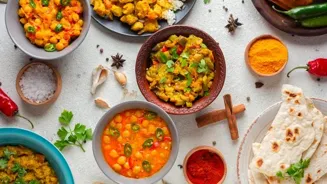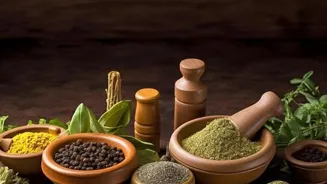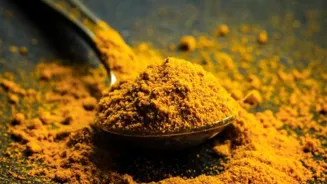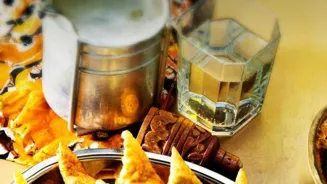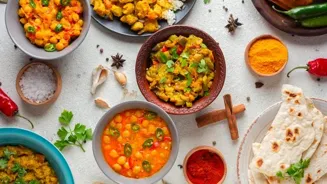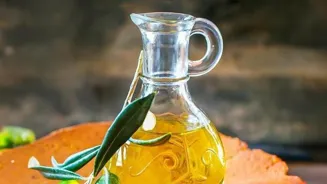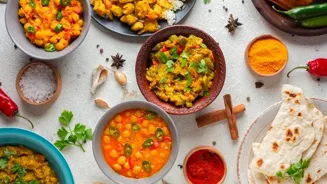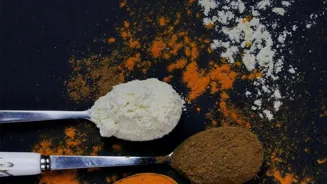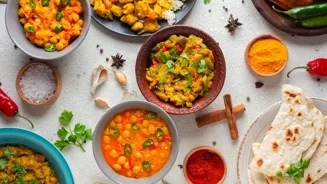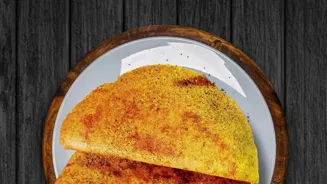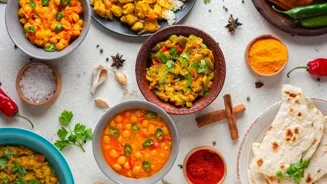Discover the art of making Authentic Indian Dal with essential tips & recipes. Elevate your cooking game now!
For many Indians, a comforting bowl of dal is more than just food; it's a taste of home, a reminder
of family, and a source of nourishment. Dal, a staple in Indian cuisine, is made from lentils or pulses and simmered with spices to create a flavorful and nutritious dish.
While instant versions might be tempting, nothing beats the authentic taste of a homemade dal. Fear not, aspiring cooks! Making restaurant-quality dal at home is easier than you think.
This article will guide you through various dal recipes and share essential cooking tips to help you master this Indian classic.
Explore diverse Indian dals for unique flavors and textures
India boasts a diverse range of dals, each offering a unique flavor and texture profile. Toor dal, also known as arhar dal, is a yellow lentil commonly used in sambar and simple everyday dals.
Moong dal, both yellow and green, is light, easy to digest, and perfect for quick meals or when feeling under the weather. Masoor dal, a reddish-orange lentil, cooks quickly and becomes creamy when cooked thoroughly.
Urad dal, either whole black or split white, is used in dishes like dal makhani and idli batter. Chana dal, or split chickpeas, has a nutty flavor and requires a bit more cooking time.
Experimenting with these different dals will broaden your culinary horizons and allow you to discover your personal favorites. Remember, each dal may require slightly different cooking times and spice combinations, so it's always a good idea to research specific recipes for the best results.
Knowing the characteristics of each dal ensures that you can tailor your cooking approach and create perfectly textured and flavorful results every time.
Classic toor dal recipe, simple yet flavorful, perfect with rice or roti
Let's start with a classic – Toor Dal (Arhar Dal). This recipe is a simple yet flavorful everyday dal that pairs well with rice or roti. First, rinse one cup of toor dal thoroughly under running water until the water runs clear. This removes any impurities and excess starch.
Next, soak the dal for about 30 minutes to an hour. Soaking helps to soften the lentils and reduces cooking time. In a pressure cooker or a pot, combine the soaked dal with 2-3 cups of water, a pinch of turmeric powder, and a teaspoon of salt.
Pressure cook for 3-4 whistles or simmer in a pot until the dal is soft and mushy. While the dal is cooking, prepare the tempering (tadka). Heat ghee or oil in a small pan. Add cumin seeds, mustard seeds, and a pinch of asafoetida (hing).
Once the seeds splutter, add chopped onion, ginger, and garlic. Sauté until the onions turn golden brown. Pour the tempering over the cooked dal. Garnish with chopped cilantro (coriander leaves) and serve hot.
This simple recipe showcases the beauty of minimal ingredients and is a perfect starting point for your dal journey. Remember, the key is to cook the dal until it’s soft and easily mashed, ensuring a smooth and comforting texture.
Moong dal: easy to digest, versatile, and comforting dish
Next up is Moong Dal, known for its ease of digestion and delicate flavor. For a basic Moong Dal recipe, rinse one cup of yellow moong dal thoroughly. You don't necessarily have to soak yellow moong dal.
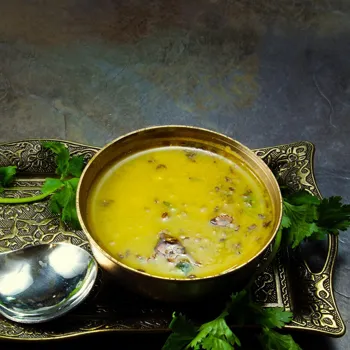
Combine the rinsed dal with 2-3 cups of water, a pinch of turmeric powder, and salt in a pressure cooker or pot. Cook until the dal is soft, about 2-3 whistles in a pressure cooker or until the lentils break down in a pot. For the tempering, heat ghee or oil in a pan. Add cumin seeds, and ginger.
Sauté for a minute, then add chopped tomatoes. Cook the tomatoes until they soften and release their juices. Pour the tempering over the cooked dal. Add a squeeze of lemon juice and garnish with cilantro. Moong dal is often served with rice or as a soup, especially when someone is feeling unwell.
Its light and nourishing qualities make it a comforting and restorative dish. You can also add vegetables like spinach or carrots to the moong dal for extra nutrition and flavor. This dal is incredibly versatile and can be adapted to your personal preferences.
Masoor Dal recipe with aromatic tadka, creamy texture, and comforting taste
Masoor Dal, with its vibrant orange hue, is another favorite in Indian households. To make a simple Masoor Dal, rinse one cup of masoor dal until the water runs clear. Soaking is optional but can reduce cooking time.
Combine the rinsed dal with 2-3 cups of water, a pinch of turmeric powder, and salt in a pressure cooker or pot. Cook until the dal is very soft and almost creamy, 2-3 whistles in a pressure cooker or until the lentils break down in a pot. Heat ghee or oil in a pan for the tadka.
Add cumin seeds, chopped garlic, and dried red chilies. Sauté until the garlic turns golden brown and the chilies release their aroma. Pour the tempering over the cooked dal. Garnish with cilantro and a dollop of butter or ghee.
Masoor dal has a slightly sweet and earthy flavor and is often served with rice or roti. Its creamy texture makes it a satisfying and comforting meal. Experimenting with different spices like garam masala or amchur (dry mango powder) can add depth and complexity to the flavor profile.
The addition of red chilies in the tadka provides a pleasant warmth and kick.
Cooking tips for perfect dal: rinse lentils, use quality ghee, experiment with spices, adjust water, simmer for rich flavor
Now, some essential cooking tips to elevate your dal-making game. First, always rinse your lentils thoroughly to remove impurities and excess starch. Soaking lentils, especially harder varieties like chana dal and urad dal, significantly reduces cooking time and improves texture.
Use good quality ghee or oil for the tempering, as it adds a rich flavor to the dal. Don't be afraid to experiment with spices!
Cumin, mustard seeds, asafoetida, ginger, garlic, turmeric, and red chilies are commonly used in dal recipes, but you can also add garam masala, coriander powder, or even a pinch of amchur for extra flavor. Adjust the amount of water depending on the desired consistency.
If you prefer a thicker dal, use less water; for a thinner dal, use more. Simmering the dal on low heat after pressure cooking allows the flavors to meld together and develop a richer taste. Finally, always garnish your dal with fresh cilantro for a burst of freshness and color.
These tips will help you create delicious and authentic dal every time. Remember that practice makes perfect, so don’t be discouraged if your first attempt isn’t perfect.
Mastering tadka for flavorful dal: key tips for perfect tempering technique
Mastering the art of tadka, or tempering, is crucial for creating flavorful dal. The tadka is essentially a mixture of spices heated in ghee or oil and then added to the cooked dal. The hot oil infuses the spices, releasing their aroma and flavor, which then permeates the entire dish.
Experiment with different combinations of spices to find your preferred taste. Using ghee instead of oil adds a richness and depth of flavor that is hard to replicate. Ensure that the ghee or oil is hot enough before adding the spices, but be careful not to burn them.
Burnt spices will impart a bitter taste to the dal. The order in which you add the spices also matters. Start with spices that need more time to release their flavor, such as cumin seeds and mustard seeds, followed by those that cook quickly, such as garlic and ginger.
Adding a pinch of asafoetida (hing) to the tadka is a great way to enhance the digestibility of the dal and add a unique flavor. Remember, the tadka is the heart and soul of the dal, so take your time and perfect your technique.
The right tadka can transform a simple dal into a culinary masterpiece.
Dal is versatile; customize with veggies, adjust spice, serve various ways
Finally, remember that dal is incredibly versatile and can be customized to your liking. Add vegetables like spinach, tomatoes, carrots, or even pumpkin for extra nutrition and flavor. You can also adjust the spice level to suit your preferences.
If you prefer a milder dal, use fewer chilies; for a spicier dal, add more. Consider adding a squeeze of lemon juice or a dollop of yogurt to the dal for a touch of tanginess. Experiment with different herbs and spices to create unique and exciting flavor combinations.
Dal can be served as a main course, a side dish, or even a soup. It pairs well with rice, roti, naan, or any other Indian bread. Leftover dal can be stored in the refrigerator for several days and reheated easily. It can even be used as a filling for parathas or as a base for other dishes.
Dal is not just a dish; it’s an experience. Enjoy the process of creating it, and savor the delicious flavors and aromas. With a little practice and experimentation, you'll be making authentic Indian dal like a pro in no time!
AI Generated Content. Glance/InMobi shall have no liability for the content